The Bounty of Cajun Country
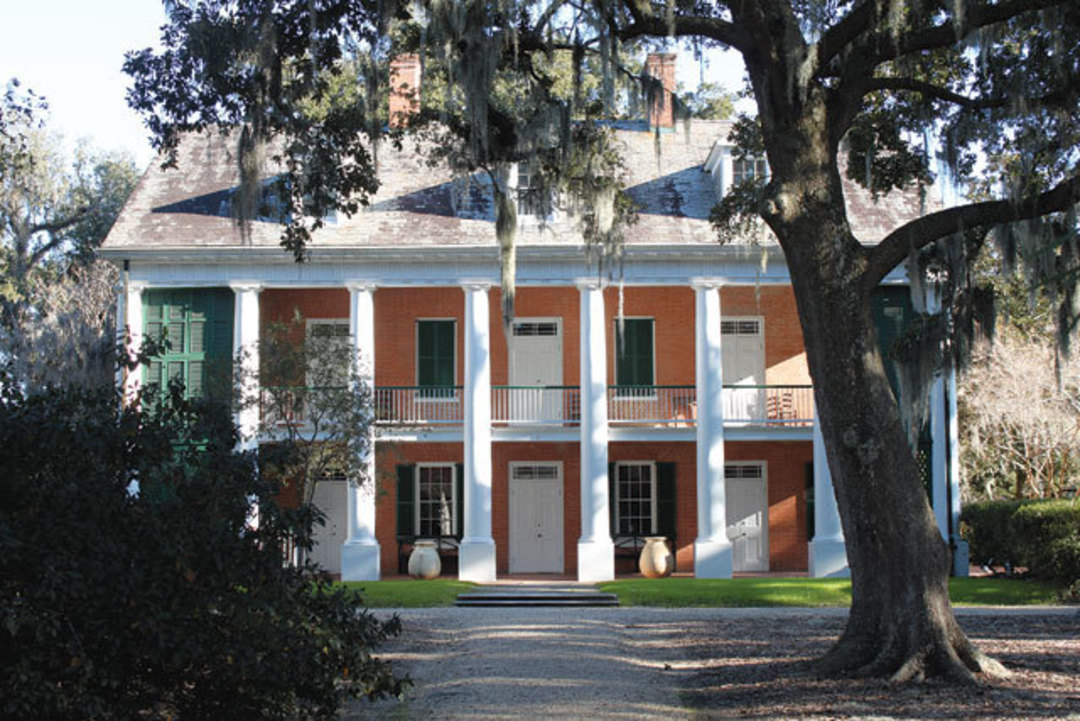
Shadows on the Teche
Image: Joseph Hoffheimer / Flickr
When I walked through the doors of the Best Stop Supermarket in Scott, Louisiana—a small town outside of Lafayette that bills itself as the Boudin Capital of the World—I was immediately saturated in the aroma of frying meat. The deli counter was jam-packed with exotic foodstuffs like pork tasso, andouille sausage, and pork skin cracklins, and a prominent sign read “Hog Lard Available.” The back of the store was lined with floor-to-ceiling freezers stocking everything from alligator meat to marinated rabbit to stuffed beef tongue.
After ordering a link of boudin sausage, a grapefruit-sized hunk of pork tasso, and several fried boudin balls, I took it all outside, where the absence of picnic tables compelled me to eat my lunch on a low concrete ledge by my car. The tasso—a heavily seasoned smoked pork product made from shoulder butt—proved so dense that it took all my strength to pry off a few strips of meat. I later learned that tasso isn’t eaten by itself but used as a flavor base for stews and other dishes. The boudin sausage came in a transparent casing, and after being sliced into sections was soft enough to spread on slices of bread. The fried boudin balls were salty, spicy, and melted in my mouth.
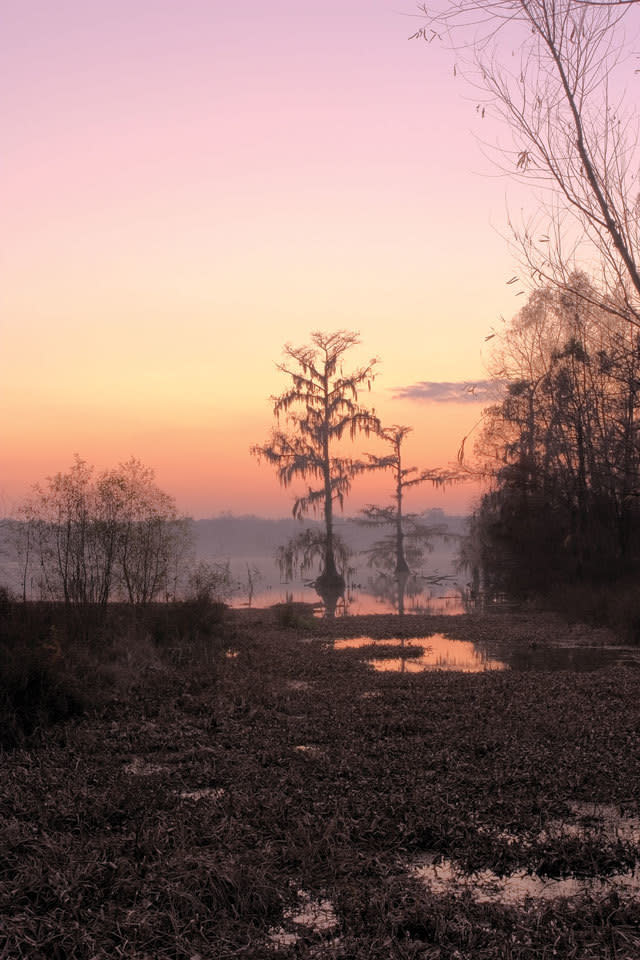
The mournful beauty and solemn grandeur of Lake Martin
Image: Shutterstock
I had left Houston only about three hours ago, but already I felt like I was in a different country—Cajun country, to be exact. The original Cajuns (known as Acadians) were French-speaking inhabitants of present-day Nova Scotia who, in the late 18th century, were expelled from Canada by their British rulers after refusing to sign loyalty oaths to the crown. The English burned the Acadians’ homes, confiscated their property, and loaded them onto ships bound for all corners of the world. Many of them later found their way to the French colony of Louisiana, where they managed, against formidable odds and pervasive discrimination, to preserve their linguistic, cultural, and culinary traditions.
Originally inspired by French cuisine but also influenced by their new home on the Gulf of Mexico, Cajuns (the Americanized pronunciation of ‘Acadians’) developed their own distinctive style of food, heavy on seafood, sausage, and wild meat, and just generally, well, heavy. I began to feel the heaviness almost as soon as I left the Best Stop, and it stayed with me for the remainder of the trip. Cajuns are also known for their hospitality, which was on full display at Durand’s Deli, Grocery, and Casino in St. Martinville, my next stop. When I walked in, the café was empty except for the two women manning the counter, Annabelle and Shakina. They greeted me warmly and began describing the menu options in lavish detail, including the specials for every day of the week, although in truth the choices were rather limited, consisting mainly of sandwiches, hamburgers, and soup. Unfortunately, my stomach wasn’t yet ready to try even such uncharacteristically light fare, so I ordered a coffee.

While they made a new pot, I asked the women what I should do in St. Martinville. This being Cajun country, Shakina’s recommendation was to eat more food, specifically the frog legs at Possum’s restaurant, although Annabelle quickly squelched this suggestion. “Pas de Possum’s!” she said. Apparently, the establishment had recently closed. Then they recommended that I visit the Evangeline Oak, just down the street on the banks of Bayou Teche. The giant tree is named after the eponymous heroine of Henry Wadsworth Longfellow’s famous 1847 poem about the Acadians’ plight, which serves as the unofficial Cajun epic despite the fact that Longfellow never visited Louisiana.
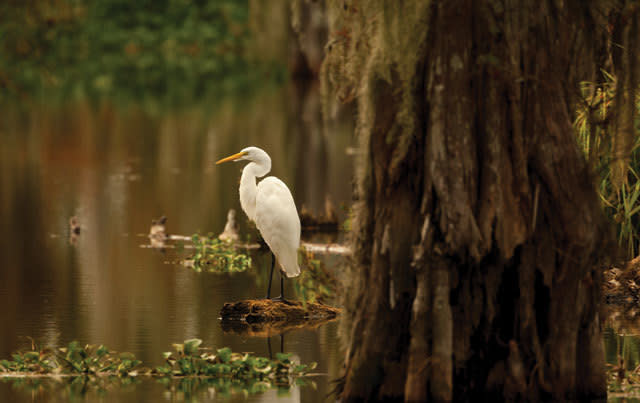
Egrets? I’ve had a few; but then again, too few to mention.
Image: Shutterstock
Another well-known Cajun trait is insularity. Having endured a traumatic exile from their original homeland, today’s latter-day Acadians seem understandably predisposed to stay close to home and family. As a woman we met in New Iberia, just down the road from St. Martinville, put it, “I was born here, and I will die here. I have no intention of going anywhere else.” She was giving us a tour of Shadows on the Teche, an 1834 sugar plantation now overseen by the National Trust for Historic Preservation. The once vast estate has been whittled down to its impressive gardens—featuring live oaks draped with Spanish moss, a signature of Cajun country—and the main house, whose furnishings are original, including the beautiful horsehair furniture in the parlor and grand mahogany commode in the master bedroom.
That night, I finally felt up to trying some more Cajun food, so I drove down US 90 to Houma, where I feasted at A-Bear’s restaurant on gumbo, shrimp and crabmeat stew, and fried catfish topped with melted butter, after which I promptly felt 10 pounds heavier. Not so the 51-year-old restaurant’s other customers, who somehow still had the energy to two-step across the dance floor, accompanied by an accordionist and keyboardist playing raucous Cajun music. Everyone at the restaurant seemed to know each other, and people flitted constantly from table to table trading jokes and gossip.
{page break}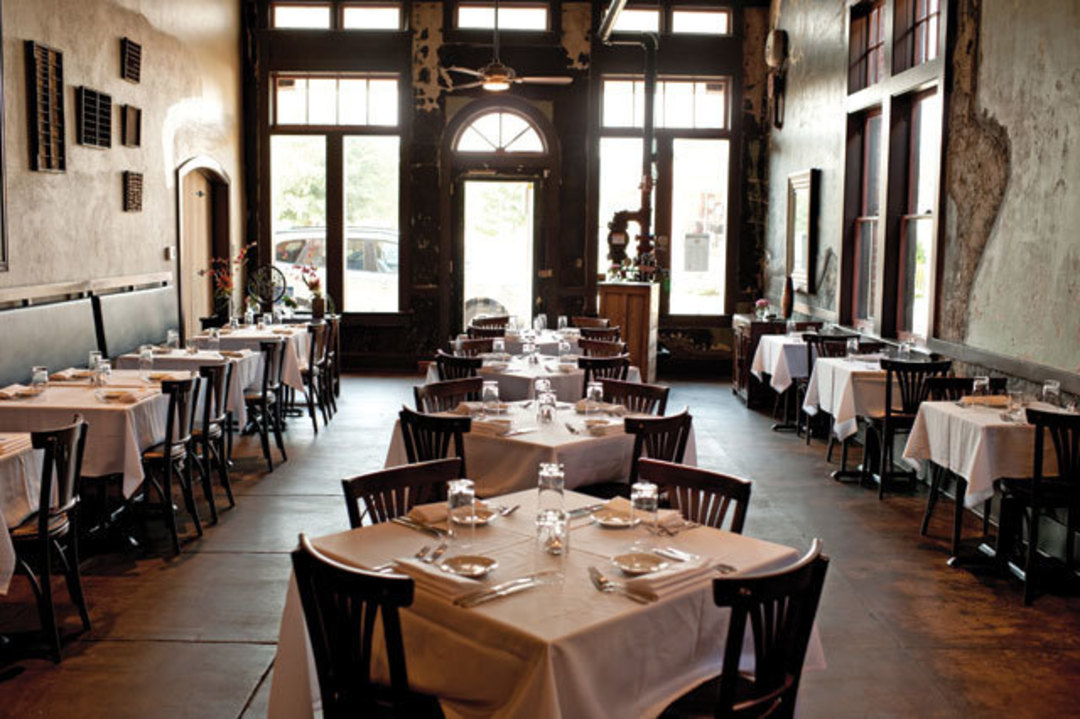
The French Press, a white-linen restaurant in downtown Lafayette. Courtesy The French Press.
That night I stayed at the Dansereau House in Thibodaux, a stunning 1847 mansion complete with a mansard roof, cupola, and wraparound veranda. Innkeeper Gail Dubois showed me to my vast suite on the third floor, which featured marble floors, antique furniture, and luxurious carpeting. After a night of deep sleep in a carved wooden bed, I walked downstairs to find a breakfast spread of smoked sausage, French toast, scrambled eggs, fresh fruit, and yogurt—much heartier than my usual fare, but nevertheless the lightest meal I’d eaten on the trip so far.
On the way to Breaux Bridge for an afternoon swamp tour, I stopped at the inaptly named Oil Center Health Foods store in Lafayette for lunch to give my intestinal system a break. I ordered the store’s “Bible Sandwich”—a whole wheat pita stuffed with alfalfa sprouts and diced tomatoes—which I finished on the shore of Lake Martin, the launching site for Cajun Country Swamp Tours. The company was founded by Butch Guchereau, who grew up on a small farm on the banks of Bayou Teche, where he still lives today. Our guide was his son Shawn, a genial man in a camouflage LSU cap and jeans, who led our 14-person excursion on Lake Martin.
As his narrow aluminum crawfish skiff meandered through the shallow-bottomed swamp, Shawn pointed out snowy egrets, yellow-rumped warblers, great blue herons, and even a bald eagle. He told us about the 20th-century logging companies that cut down 95 percent of the area’s bald cypress trees, one of the few species that can survive in swamps. What we were seeing today, he explained, was mostly second-growth forest, although here and there we came across a few of the old giants swathed in Spanish moss, including one estimated to be between 600 and 800 years old.
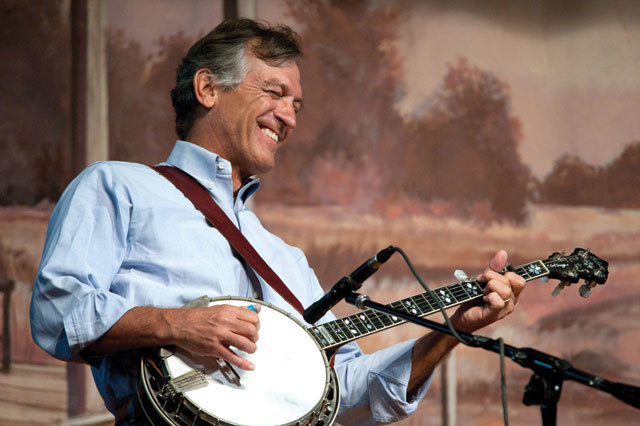
Adrian Percy of the Fugitive Poets playing Liberty Center for the Performing Arts. Courtesy David Simpson / Liberty Center for the performing Arts.
On Saturday night, I took a trip to Eunice, a small town northwest of Lafayette, to see the famous Rendez-Vous des Cajuns, a weekly live radio show broadcast from the historic Liberty Center for the Performing Arts to all of Cajun country. The show’s MC alternated between French and English as he introduced the Fugitive Poets from Baton Rouge—who performed a rollicking set of original compositions and bluegrass standards—before asking everyone who was from out of state to raise their hands. Almost half the audience did so, including travelers from as far away as Indianapolis, Seattle, and New York. Then came Red Saltzman and the Ramblin’ Cajuns, whose fast-paced waltzes and shuffles were all it took to persuade several couples to jump up and dance in front of the stage.
Only in Cajun country, it seems, can doing nothing be a great way to work up an appetite. Deciding that one healthy meal was enough, I had dinner at The French Press, a white-linen restaurant in downtown Lafayette—the largest town in the region and its unofficial capital. Opened by New Orleans chef Justin Girouard in a cavernous space formerly occupied by a newspaper printing press, The French Press serves breakfast and lunch all day. I ordered a Cajun dip sandwich—cochon de lait, ham, Swiss cheese, and house-brined pickles on flaky French bread, served au jus. I was almost offended when it arrived with a baby spinach salad.
The final night of my trip, I stayed at Buchanan Lofts, a former warehouse that now houses nine contemporary-style hotel rooms. My 1,180-square-foot suite contained a sleeping loft, spacious living room, fully equipped kitchen, and even a washer/dryer. Worlds away from the antebellum Dansereau House, it was no less luxurious. Sunday morning found me back on I-10 for the trip home, and what I imagined would be an extended convalescence from my Cajun culinary binge. No sooner had I entered the highway, however, than I saw a sign for Best Stop—the site of my original gastronomical sin. This time, however, I took a pass on another round of artery-clogging victuals. Instead, I bought a frozen bag of boudin sausage, packed it down with ice in a styrofoam cooler, and put it in the trunk for the drive back to Houston. My grandmother had asked for boudin. And you don’t say no to your grandmother.




